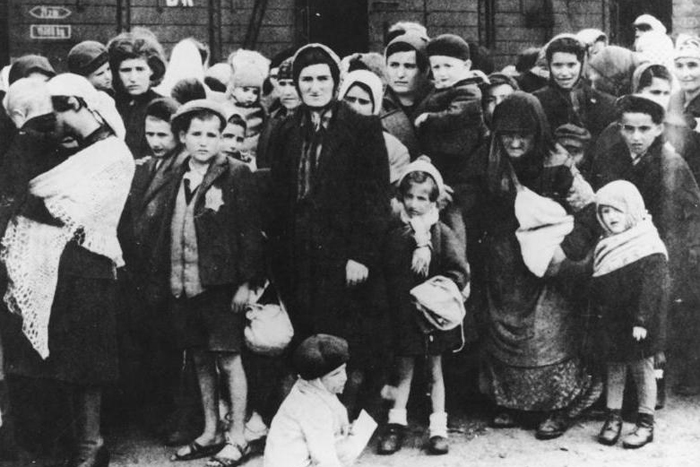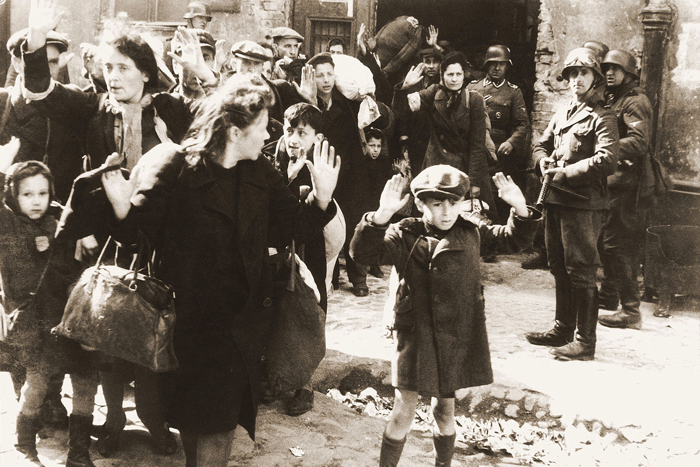The Holocaust: Facts & Remembrance

While the term “Holocaust” — a word with Greek roots meaning “sacrifice by fire” — has historically been used to describe large-scale massacres of people, it now almost exclusively refers to the state-sponsored murder of the Jewish population of Europe during World War II at the hand of the German Nazi government, led by Adolf Hitler. Approximately 6 million Jews were murdered by the Nazis between 1939 and 1945, historians estimate, alongside a myriad of other groups they considered undesirable or dangerous, including the mentally and physically handicapped, the deaf, homosexuals, Communists, Poles and other Slavs, Roma or Gypsies, political dissidents or intellectuals, and many more. Researchers estimate that no fewer than 10 million non-combat, non-civilian casualties of World War II were a result of the brutal and targeted Nazi killing machine.
How it began
The Nazis believed that Germans were a superior race of people destined to rule Europe and all its inferior classes, with Jews occupying the very bottom rung of the ethnic ladder. Though organized and widespread killing programs occurred during the war years, the persecution of the Jews actually began in the early 1930s, when Hitlerfirst came to power. Leading up to the war, Jews in Germany were forced to carry papers marking their religion and were subject to increasingly discriminatory laws. As the war began, Jewish populations throughout occupied territories in Central and Eastern Europe were pushed into designated neighborhoods called ghettos. The ghettos made it easier for the Nazis to round Jews up and send them to camps as political prisoners, a practice that began slowly in the first years of the war but then picked up pace rapidly in 1941. By 1942-43, Hitler was using the chaos and cover of the Second World War to execute his “Final Solution,” or the systematic murder of the Jews of Europe.
The ultimate tally was grim: Poland alone lost over 3 million Jews, or 90 percent of its pre-war Jewish population to the Holocaust; Ukraine lost almost 1 million. By war’s end, nearly 70 percent of the continent’s Jewish population was gone.
Concentration camps
The Nazis were able to accomplish their goals so quickly by creating concentration camps — prisons, effectively, where Jews and other persecuted peoples could be held, sorted and murdered in large numbers. Many of these camps began as forced labor camps early in the war and were converted for killing, while some were built exclusively for that purpose as the Nazis ramped up their Final Solution. Nearly 20,000 camps of various sizes and purposes would dot the European countryside by the end of the war. The most lethal among them were found in Poland and Germany, where the Nazis long had a stranglehold. Auschwitz-Birkenau alone, a sprawling complex in Poland, is estimated to have seen the deaths of 1 million Jews. Other notorious death camps included Chelmno, Sobibor and Treblinka.
Gas chambers and medical experiments add to toll
Once captured and shipped to the camps, Jewish prisoners could be selected for work, if healthy, but many were sent straight to gas chambers. These custom-built rooms, usually disguised as showers to avoid prisoner revolt, were pumped full of poisonous gases that caused death when inhaled. Victims were then burned in purpose-built ovens, in part to preserve the secret of the camps as killing machines and also to deal with the masses of bodies needing disposing of. Those who survived the original selection process at the camps were forced to live in horrible, cramped conditions, and many simply succumbed to malnutrition or disease. Medical clinics onsite also employed Nazi doctors to conduct painful scientific experiments on the handicapped and, occasionally, twins. These experiments usually ended in death for the patient.
Holocaust survivors remember
Most of the Nazi concentration camps were liberated by Allied soldiers in the spring of 1945; some, like Dachau and Auschwitz, remain open still today for visitors as a memorial to what happened there. There are also countless museums around the world dedicated to keeping the memory of victims alive, including the United States Holocaust Memorial Museum in Washington, D.C., America’s national place of remembrance and commemoration of the Holocaust. Over the decades, Holocaust survivors and their families have been diligent in gathering and sorting once scattered records belonging to the victims lost during those years, aided by groups dedicated to the cause.
The number of people with first-hand memory of the Holocaust is dwindling, but the importance of commemorating the event and paying tribute to both victims and survivors remains as significant as ever for communities around the world, some 70 years later. Holocaust Remembrance Day, or Yom HaShoah in Hebrew, is set aside annually to observe this, one of history’s worst genocides. The internationally recognized date corresponds to the 27th day of Nisan on the Hebrew calendar. It marks the anniversary of the Warsaw ghetto uprising. In 2014, the day falls on April 28.
Get the world’s most fascinating discoveries delivered straight to your inbox.
Further reading:




